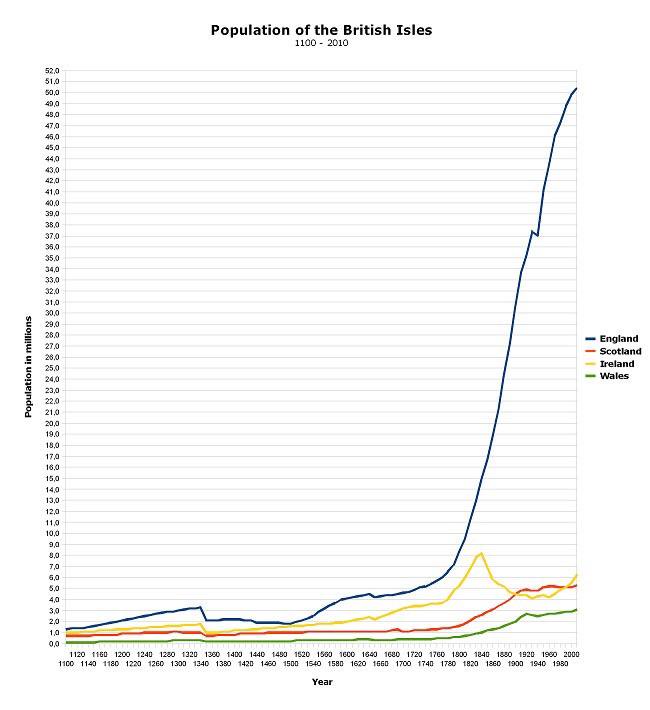The second most amazing thing, after the growth of the population of England shown in this graph recently posted on Twitter by Myko Clelland, is the decline in the population of Ireland that started, but didn't end with the famine of the 1840s.
Through the 18th century to the famine the population trend in Ireland was following much the same trajectory as in England.
What would have happened if the potato blight had not struck, famine had been avoided and parallel population growth continued?
In 1840 England's population was 15 million, Ireland's 9 million—60 per cent of England's.
In the year 2000 England's population was 50.3 million. 60 per cent of that is 30 million. Compare that to Ireland's actual population that year of 6.2 million.
30 million living Ireland with an area of 84,421 km² would mean an average 354 people per km²—about the same as Belgium today. The UK has 255 people per km².
Would there have been a development path to sustain a population of 30 million? Is there a hint in the censuses of 1841 and 1851 which, in addition to showing the population decline, records a widespread if small increase in the ability to read and write (see https://irishfamineproject.com/)? The National School system had been introduced in 1831.
Or would there have been continued major migration, as was the Irish experience before the famine and after it? Ireland may be thought of as green, but through the ages many have seen the grass to be greener on the other side of the hill.
Subscribe to:
Post Comments (Atom)


No comments:
Post a Comment